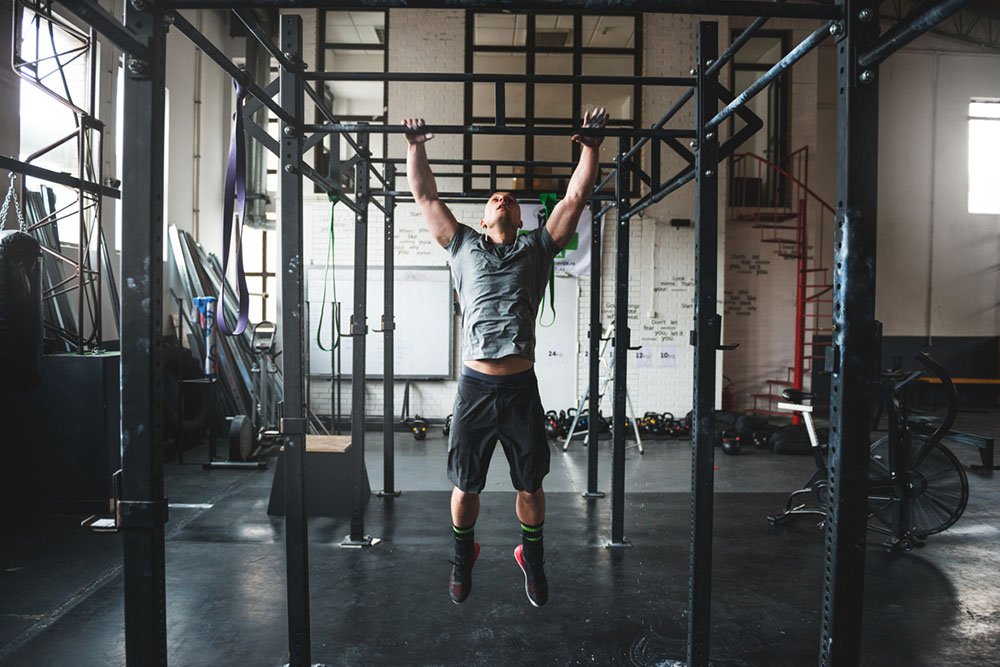Does CrossFit Have A High Risk Of Injury?

Hunter Bennett
Over the last decade, CrossFit has taken the world by storm.
Offering a way to build strength and power, increase endurance and aerobic capacity – all while creating a unique sense of culture that cannot be found anywhere else – is there any surprise it is one of the most popular types of exercise on the planet?
However, a consistent criticism of CrossFit is that it has a high risk of injury – but is this really the case?
Well, some recent research comparing CrossFit to more traditional weightlifting has tried to answer this question for us.
CrossFit VS weightlifting
If I were to describe it as simply as possible, CrossFit is a unique type of workout routine that consists of high intensity plyometric, gymnastic, and weightlifting exercises performed in a circuit style fashion.
Conversely, weightlifting is a type of exercise that revolves almost entirely around two movements – the snatch, and the clean and jerk – and their derivatives.
What are the differences between CrossFit and traditional weightlifting?
CrossFit sessions are normally completed for time and are described as a ‘workout of the day’, or WOD for short.
These sessions will consist of a variety of different movements that combine strength, speed, endurance, and aerobic capacity. Collectively, they focus on developing several different fitness qualities at the same time.
Now, weightlifting is markedly different.
The primary focus of weightlifting is to improve your ability to perform the snatch and the clean and jerk weightlifting movements – with the intent to lift as much weight as possible during these movements.
Weightlifting training will, therefore, revolve around performing these movements – and those that underpin them (such as squats, push presses, and deadlifts) – with high loads, and for relatively low repetitions.
Taking this into consideration, the intent of weightlifting is to build strength and power, while simultaneously honing technical proficiency in these very specific movements.
Related Article: 3 Benefits of CrossFit
Does a high exercise intensity increase injury risk?
When it comes to exercise, injuries can occur in a myriad of different ways.
For example, low and moderate intensity exercise that is longer in duration (think running, cycling, and swimming) have injuries that are most commonly chronic in nature. This means that they come on as a result of overuse.
Think of things like tendinopathies, fasciitis, and degenerative joint issues – all of which are the result of the same repetitive stress occurring to a specific tissue repeatedly.
Alternatively, injuries sustained during high-intensity exercise are often more acute in nature. They tend to occur as a result of a muscle or joint being placed in a vulnerable position, often associated with you completing a movement incorrectly (or simply with poor technique).
Ankle, knee, hip, and shoulder sprains all fit quite nicely into this category, as do acute lower back issues.
Now, with each of these, it actually appears that injury risk increases with exercise intensity.
Essentially, the harder you work, the more likely you are of experiencing an injury (Rynecki, 2019).
Are injuries more common in CrossFit than weightlifting?
With this in mind, both CrossFit and traditional weightlifting are technically a form of high-intensity exercise.
However, they are obviously different.
Weightlifting derives its intensity from heavier loads, while CrossFit derives its intensity from performing the exercise as quickly as possible under moderate loads.
See, very different.
Now, research has shown that for the most part, both modes of exercise actually have a relatively low injury rate – especially if it is overseen by qualified coaches.
However, even in this setting, there is still a risk of injury.
In fact, over a two year training period, around 46% of people will experience an injury during weightlifting training, while around 60% of people will experience an injury during CrossFit training. This means that your risk of injury is about 1.3 times higher during CrossFit than it is during weightlifting.
As a result, this does suggest that CrossFit injuries may be more common than those seen in other types of exercise.
But why might this be the case?
Why do CrossFit injuries occur?
Arguably the main driver for CrossFit injuries comes down to fatigue.
Due to the unique nature of WODs, it is not uncommon to find yourself performing complex movement tasks (such as weightlifting movements, squats, and deadlifts) under a state of extreme fatigue. In this state, the technique is much more likely to break down, which significantly increases your risk of injury.
As simple as it might sound, this is unquestionably where CrossFit injuries are most likely to occur – during the performance of complex movements under fatigue.
What are the most common CrossFit injuries?
Considering the acute nature of CrossFit injuries, it should come as no surprise as to what the most CrossFit injuries include (Feito, 2018; Elkin, 2019).
In fact, the vast majority are derived from the:
- Shoulder
- Hip
- Lower back
- Knees
All of which are related to the breakdown of the technique!
Does having an exercise base reduce the risk of injury?
One thing I really want to point out here is that it isn’t all doom and gloom.
See, we know that CrossFit injuries occur under s ate of fatigue, and often when technique falls apart. This gives us a bit of insight into the first step we can take to reducing CrossFit injuries in a very big way.
First and foremost, it means that the better practiced you are at complex movements, the less likely that your technique will break down. This means that it is worth gaining experience in a gym setting prior to starting CrossFit to ensure that your technique is on point.
Secondly, the better developed your endurance, the less fatigued you will get during a given session. As a result, it is also in your best interest to spend a good chunk of time building your aerobic base before starting up at your local CrossFit box.
In fact, if you tick both of these boxes, then I can guarantee your risk of injury will reduce significantly.
But that’s not all you can do…
Best tips to prevent injuries occurring
So, how can you lower CrossFit injury rates?
Well, I have outlined two of the best ways, being:
- Build a good exercise base before commencing CrossFit, and
- Increase your aerobic endurance before starting CrossFit
But that isn’t all you can do. In fact, there are a number of very simple tips that you can implement to reduce your risk of injury in a big way:
- Warm up before every session: this means doing some light aerobic work, some muscle activation drills, and some mobility exercises, to make sure that you are fully prepared for a session.
- Recover appropriately: make sure that you recover enough between This means eating right, getting enough sleep, and reducing your training intensity if you are fatigued. This is the perfect way to ensure that you are fresh and ready to go for every session, rather than being in chronic a state of fatigue that will increase your risk of injury.
- Find a good coach: I would argue that finding a good coach is the best thing you can do. By training at a CrossFit box that has a good coach, you will get constant feedback around your technique. The sessions will also be structured in such a way that they will be appropriate for your training status – both of which will reduce injury risk.
Manage these tips effectively, and reap the rewards!
Related Article: The Screening That May Predict Sport Injuries
What should you do after an injury?
Last but not least, I wanted to touch on what to do after a CrossFit injury.
Assuming that the injury is acute in nature, the first thing you want to do is start applying ice to the area over the first 24-48 hours after injury. This is the perfect way to reduce inflammation and lower pain.
My favorite protocol for this is to ice the area for 15 minutes every hour.
Then, after the first 48 hours, you should start mobilizing the joint, while also performing very light movements that take the joint through a full pain-free range of motion. This not only strengthens the injured tissue but also promotes better healing.
Over the next couple of weeks, you want to strengthen up the tissue around the joint to the best of your ability, until you feel comfortable returning to full training.
It is important to note that this is a very broad guideline – subsequently, after any injury, it is obviously in your best interest to seek advice from a professional who can address your individual needs appropriately.
So make sure you see a professional!
Take Home Message
CrossFit is a very unique exercise modality that has the potential to improve nearly every facet of fitness simultaneously. However, if it is not implemented correctly, it can come with an increased risk of injury.
With this in mind, make sure you follow the tips outlined in this article to prepare your body appropriately, and lower your risk of injury in a very big way!
References
Rynecki, N. D., et al. “Injuries sustained during high-intensity interval training: are modern fitness trends contributing to increased injury rates?.” The Journal of sports medicine and physical fitness (2019).
Elkin, Joshua L., et al. “Likelihood of Injury and Medical Care Between CrossFit and Traditional Weightlifting Participants.” Orthopedic journal of sports medicine 7.5 (2019): 2325967119843348.
Feito, Yuri, Evanette K. Burrows, and Loni Philip Tabb. “A 4-Year Analysis of the Incidence of Injuries Among CrossFit-Trained Participants.” Orthopaedic Journal of Sports Medicine 6.10 (2018): 2325967118803100.










